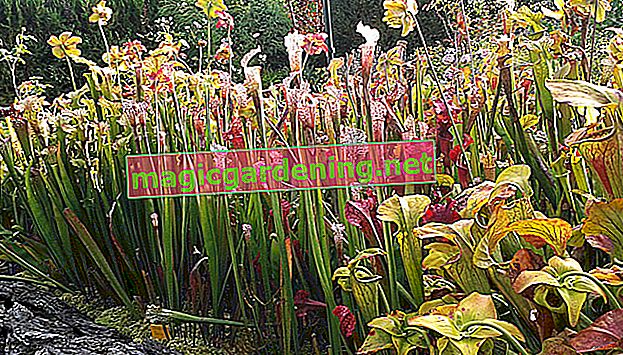
Why annual repotting is important
The ideal substrate for carnivores is a mixture of peat, quartz, pebbles and expanded clay. (€ 17.50 at Amazon *) The peat decomposes over time and thus loses the ability to store water. In addition, the nutrients are used up after a few months.
also read
- Better never fertilize carnivorous plants!
- What is the price of carnivorous plants?
- Which soil to use for carnivorous plants?
Even if most carnivorous plants do not grow as quickly and the pot is therefore not too small, it is important to put the plants in fresh substrate.
Pitcher plants and pitcher plants are among the fast-growing species that can get quite large. During annual repotting, you should always check whether a larger planter is needed for these varieties.
The best time to repot carnivores
The best time to repot your carnivores is early spring, late February to early March.
Provide planters that have a large drainage hole. The pots should have a diameter roughly the height of the plant.
Never repot carnivorous plants in normal soil
Never plant your carnivores in normal garden soil. This is far too nutritious. It can also hardly store moisture and is not loose enough.
Carnivore soil, which you can get from specialist gardeners, is suitable as soil for carnivorous plants. Alternatively, you can use slightly fertilized orchid soil, which you should also mix with styrofoam balls and gravel.
Experts for carnivorous plants put together the substrate themselves from peat (white peat), quartz sand, (14.90 € at Amazon *) pebbles, styrofoam balls and coconut fibers.
How to repot carnivores
- Carefully remove the plant from the container
- Remove old substrate completely
- If necessary, cut off dead plant parts
- Put new substrate in the pot
- let it moisten well
- Insert carnivores carefully
- Fill the pot with substrate
Tips
If your carnivorous plants have grown too big for the previous pot, simply multiply them by dividing them. For this, the carnivores have to be divided with a knife or simply plucked apart.








